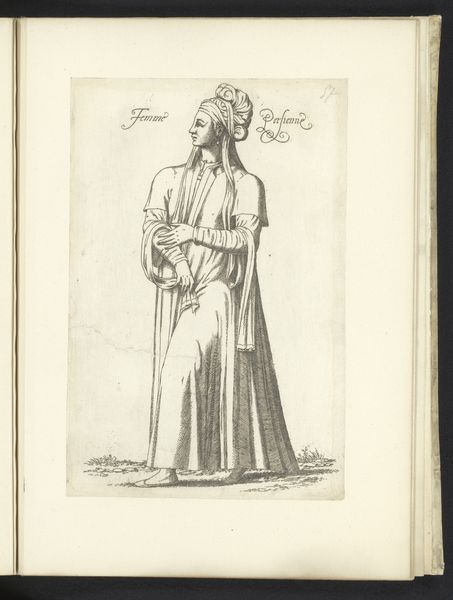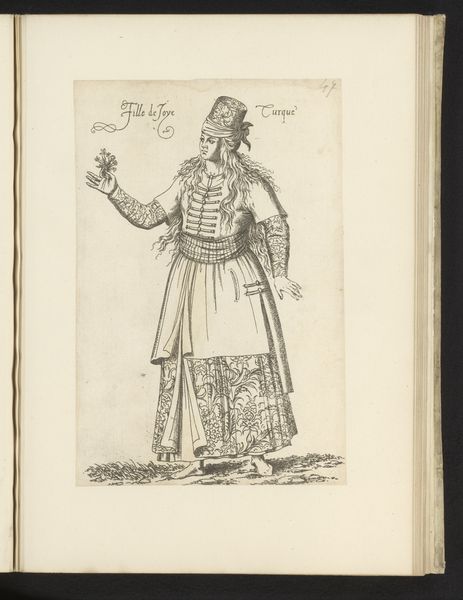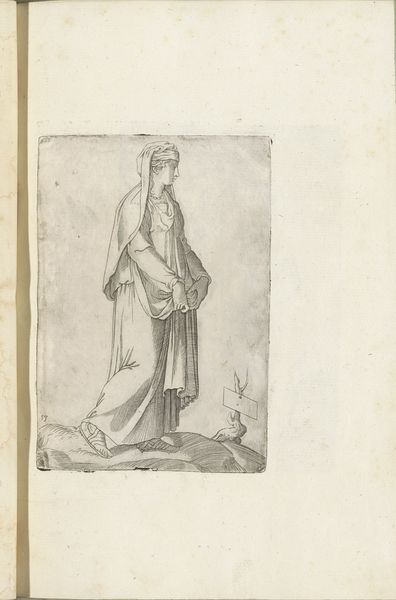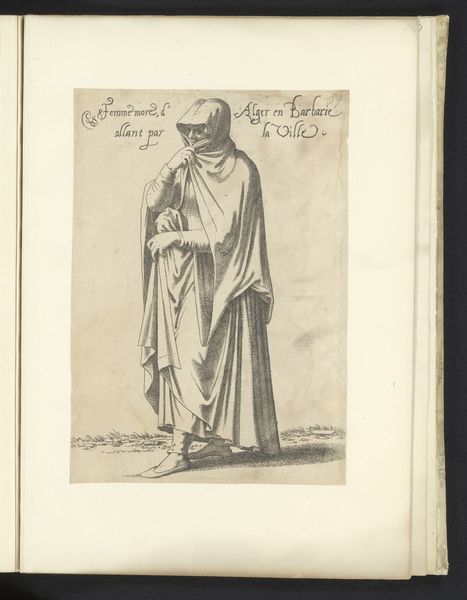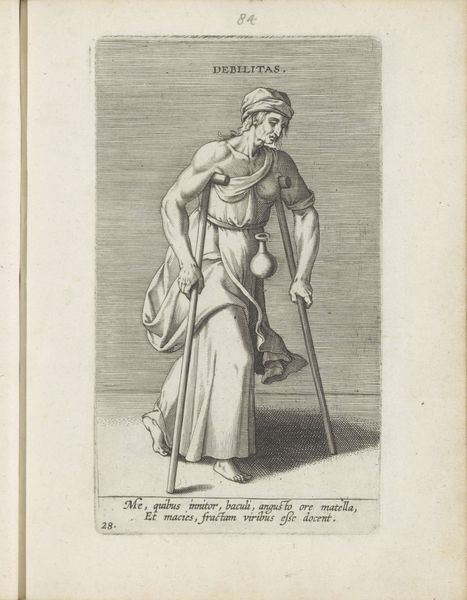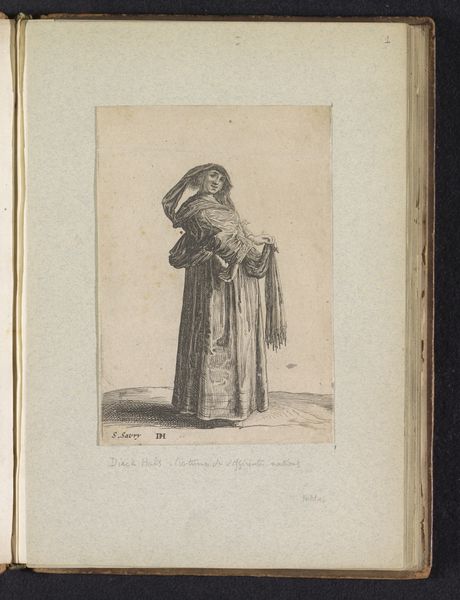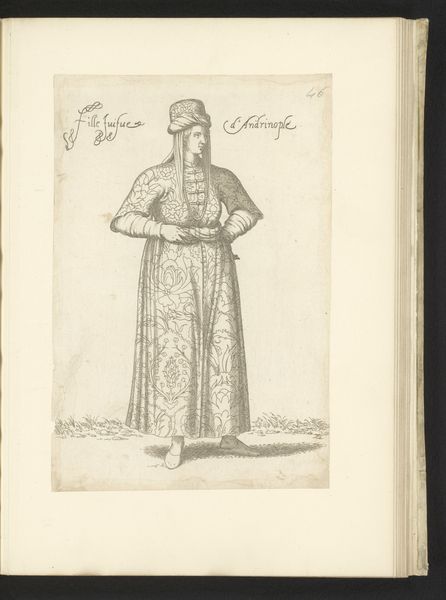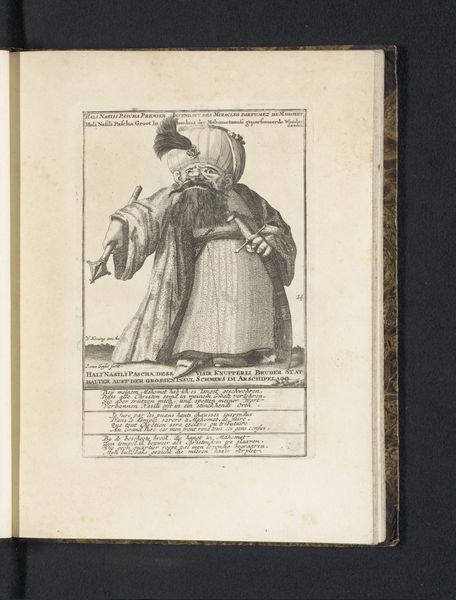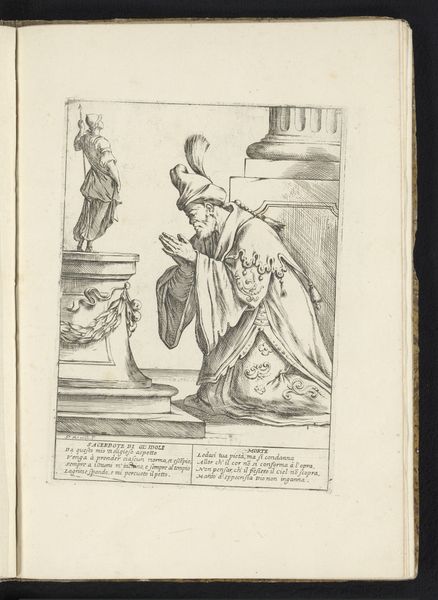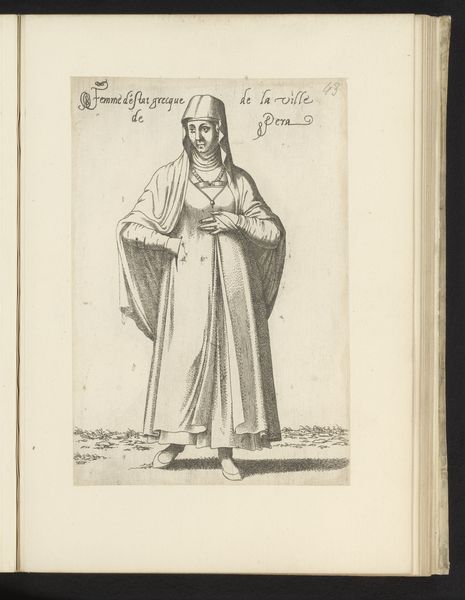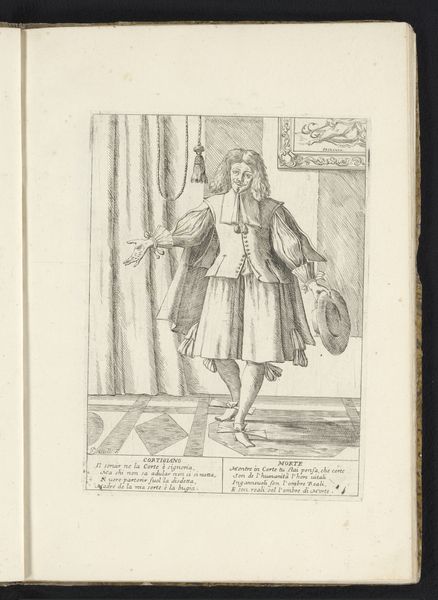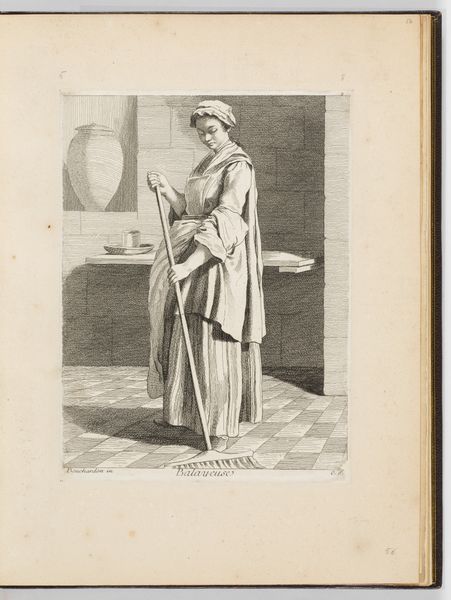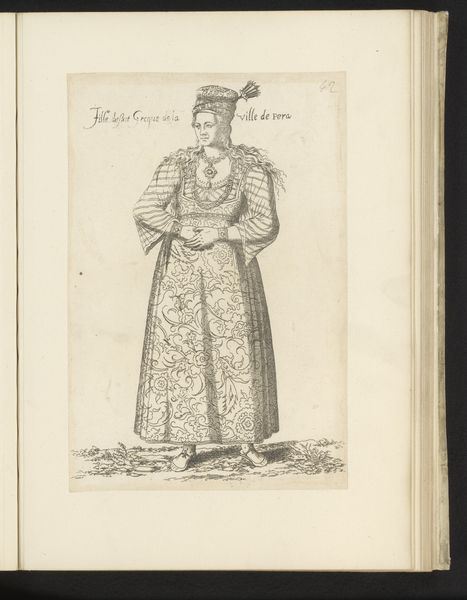
drawing, paper, ink
#
portrait
#
drawing
#
ink drawing
#
pen drawing
#
mechanical pen drawing
#
pen sketch
#
sketch book
#
paper
#
11_renaissance
#
personal sketchbook
#
ink
#
pen-ink sketch
#
pen work
#
sketchbook drawing
#
genre-painting
#
history-painting
#
sketchbook art
Dimensions: height 260 mm, width 169 mm
Copyright: Rijks Museum: Open Domain
Curator: This image, entitled "Vrouw uit Macedonië," or "Woman from Macedonia," comes to us from the mid-16th century and is attributed to Léon Davent. It’s an ink drawing on paper, seemingly part of a sketchbook. Editor: My immediate reaction is that of serene dignity. Despite the simplicity of line, the figure exudes such a strong sense of self. There is an intriguing balance here: the verticality and smoothness of her dress versus the ornateness and complex headdress. Curator: Precisely. That contrast is crucial to deciphering the imagery. Consider the elaborate headwear, adorned with what appears to be intricate metalwork and draped fabrics, coupled with multiple strands of beads, speak volumes of status and cultural identity. It echoes ancient headdresses used in rituals and public roles. Editor: The headpiece also operates as an archive, containing codes related to the figure’s class and region. Davent, a Frenchman, would be recording ethnographic information to transmit an image of otherness to his audiences. How do you read the object that the woman is holding? Curator: That's interesting—it is fairly indecipherable, which encourages different symbolic associations across time. Given her dress and ornament, the object could hold ritualistic, religious or social symbolism. It resembles a tambourine and musical expression could provide an interesting lens here too, depending on the ceremonial purpose it fulfills. Editor: Or its social purpose? Does it signal her participation within local folk celebrations and traditions, where rhythm and music were part of communal identity? I also observe how the simple strokes of Davent's pen simultaneously reveal and conceal, creating this fascinating sense of ambiguity. Curator: Yes, and that ambiguous, "unfinished" quality invites endless reinterpretations. The medium, too—ink—creates that powerful sense of depth, transforming a relatively spare portrait into something rich and captivating. Its continuous presence reminds viewers that representation involves interpretation, from artist to subject to audience. Editor: A perfect example of visual continuity. The image is shaped by past traditions but invites us to contemplate those historical legacies today. Thanks for walking through these connections and tensions with me! Curator: It was my pleasure. Analyzing these representations illuminates much of our shared cultural consciousness across generations and cultures.
Comments
No comments
Be the first to comment and join the conversation on the ultimate creative platform.
